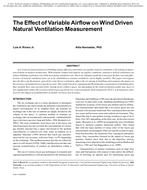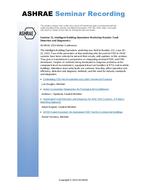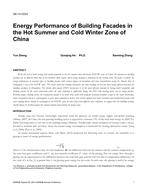Gaining popularity over the past decade for gas-fired water heating, whole-house tankless water heaters have enjoyed increasing market share due to their high efficiency, relative to standard storage water heaters, the marketing of “endless hot water,” and utility and government incentive programs. With this surge in popularity has come a better understanding of their performance limitations with deficiencies in the deliveredversus- rated efficiency characterized by several recent studies, due in large part to the minimum hot water draw rate requirements and startup sequence delays. While these deficiencies have been characterized sufficiently to prompt the modification of building codes, it remains a challenge to do so analytically. To better simulate the performance of whole-house tankless water heaters, building on an existing robust single node model, the authors have characterized several units with a laboratory test battery, focusing on short-term performance and intermittent behavior. This existing model, while complete in describing the steady-state and transient heat transfer behavior as a heat exchanger, may require additional refinement whereby some inputs may have sensitivity to test conditions (e.g,. thermal capacitance) and some impacts of tankless water heater controls are not captured, such as startup heating delays.
Citation: ASHRAE Transactions, Volume 119, Part 1, Dallas, TX.
Product Details
- Published:
- 2013
- Number of Pages:
- 22
- File Size:
- 1 file , 2.3 MB
- Product Code(s):
- D-DA-13-023


